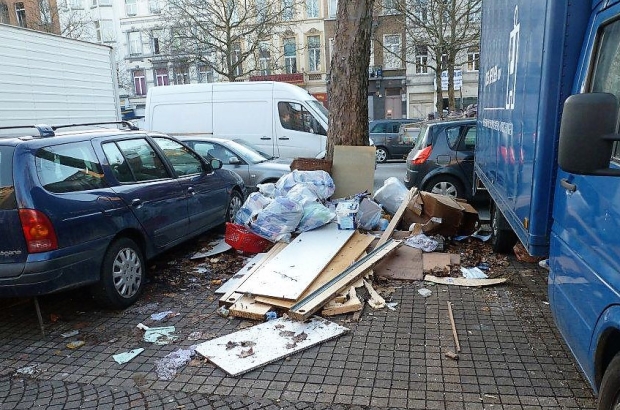- Daily & Weekly newsletters
- Buy & download The Bulletin
- Comment on our articles
Brussels unveils €80 million plan to make the city a cleaner place
Brussels is looking to clean up its image, in the literal sense, through an €80 million campaign to tackle public cleanliness.
The plan will take place over the course of three years and target some of the region’s most struggling areas when it comes to litter and public waste.
Presented by Brussels minister for public hygiene Alain Maron, the plan is being dubbed clean.brussels and will aim to foster sustainable cooperation between the different levels of government, along with private organisations and the general public.
“Brussels is still too dirty,” said Maron. “There has never been an urban cleanliness strategy. Each municipality works in its own corner. The idea now is for everyone to work together.”
As part of the plan, two transparent cubes have been set up on Place Sainte-Croix, in front of the Flagey building in Ixelles, displaying the sort of litter the residents of Brussels are tired of seeing on their streets, along with some solutions the new plan intends to provide.
“This installation has been on display in Place Sainte-Croix since Friday 25 November and is already raising questions among citizens,” a statement from the city reads.
“The volume of 8m³ was not chosen without reason: it represents the volume of litter and fly-tipping collected every hour on the territory of the Brussels region by the cleaning services and the municipalities.”
Another goal of the campaign is to remind the public that cleanliness is the responsibility of everyone: public authorities, businesses and ordinary people.
The plan features 14 objectives and 65 measures aimed at these three groups. It includes the creation of a cooperation council between municipalities and regions, the reduction of the number of discarded cigarette butts, an increase in educational activities in schools and associations and the encouragement of companies to reduce their waste.
But one of the main objectives is to harmonise the actions of cleanliness operators to avoid confusion about which areas fall under whose authority.
For example, the plan was presented in Flagey, where the square of the same name is considered the responsibility of the region, while the square of Sainte-Croix is under the responsibility of the municipality. This situation is unclear for both citizens and public services.
Cooperation between various parties aside, basic issues such as litter and illegal dumping remain a problem. In Brussels, 500,000 tonnes of unsorted waste end up in the incinerator every year, meaning stricter and more preventative action combined with better public awareness and information are essential.
“The clean.brussels strategy is based on a new mindset: the cleanest city is not the one that is the most cleaned, but the one that is the least dirty,” said Maron.
Top of mind are areas to which international travellers are most commonly exposed, including Place Flagey, Mont des Arts and Gare du Midi, which are often filled with rubbish and therefore leave tourists with a negative impression of the city.
Under the new plan, these areas will receive extra attention and the number of recycling and waste collection points will be increased.


















